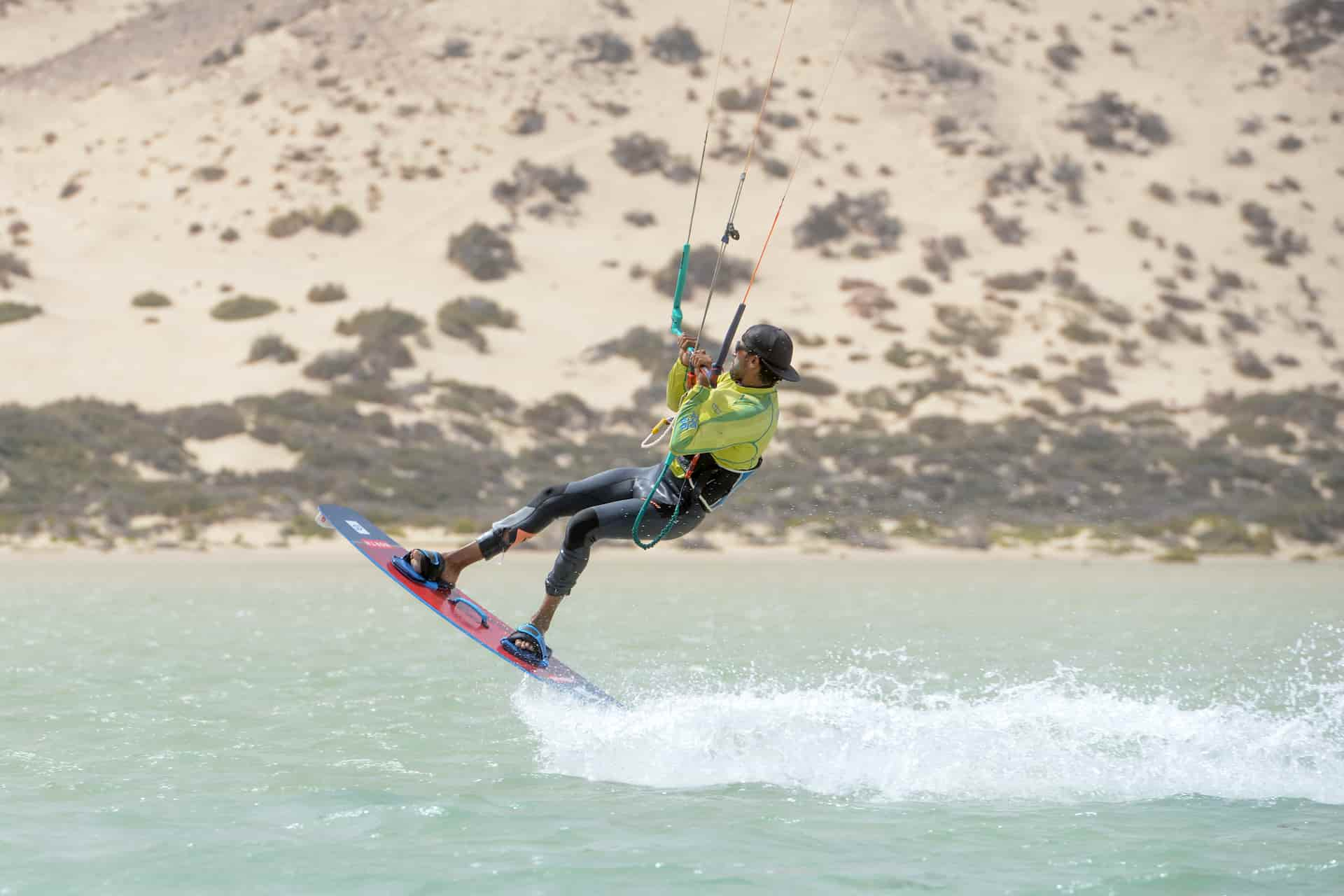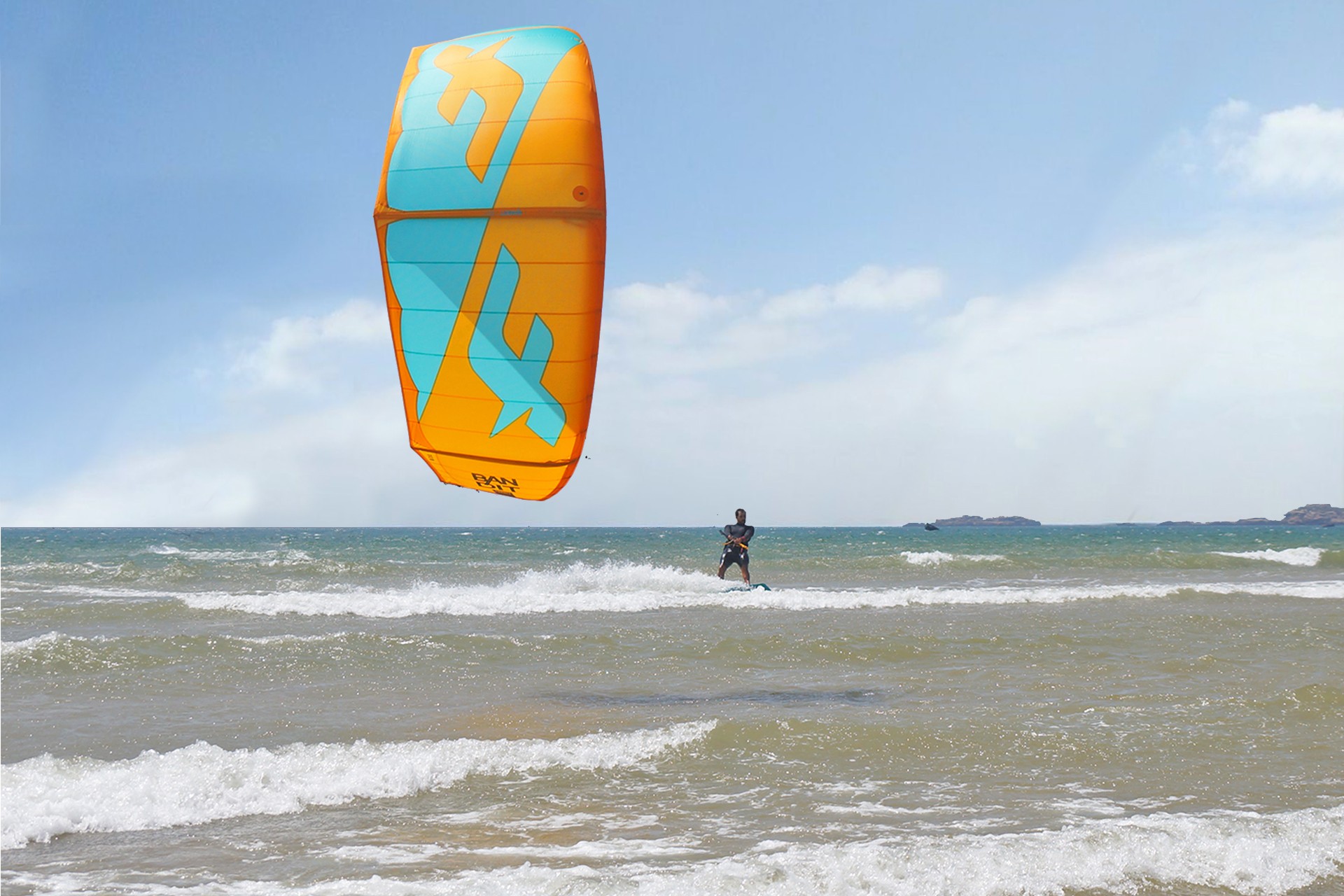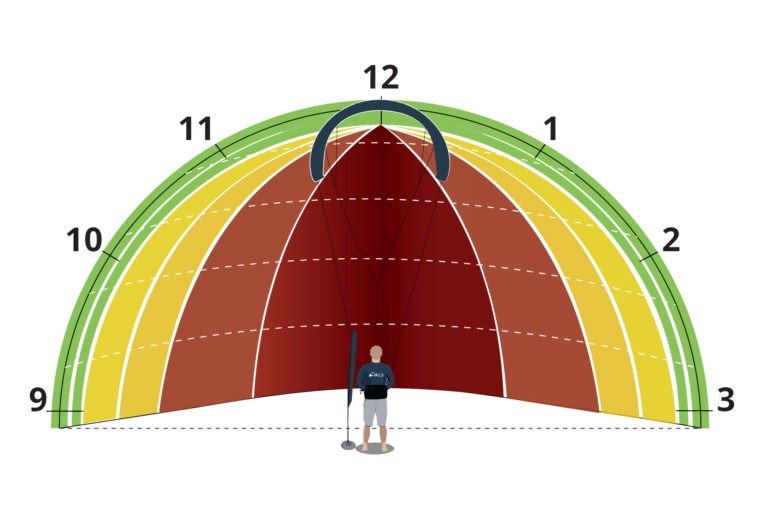Kitesurfing is not hard to learn but it is a very technical activity. It is in your best interest to learn kitesurfing with a qualified instructor. Not only does a qualified instructor will have the appropriate teaching knowledge and skills, but will also follow a determined learning path optimized for a safe and efficient progression. The first steps are fundamental to learn kitesurfing and follow a logical progression steps. You can’t get up on your board before you got traction from your kite. You can’t control your kite before you well understood the wind window. Let’s take a closer look at the different steps to learn kitesurfing from the IKO methodology :
1. Learning to fly a kite
Your instructor will first introduce you to the sport by teaching you various safety rules and skills on land before going into the water. For example, you should be shown how to assess the wind and the physical location (the spot), as well as showing how to properly manage the equipment, set-up your kite and control the kite in the air. You will launch and land your kite, and do some exercices of kite control. This is an exciting step: you will fly a real kite for the first time!
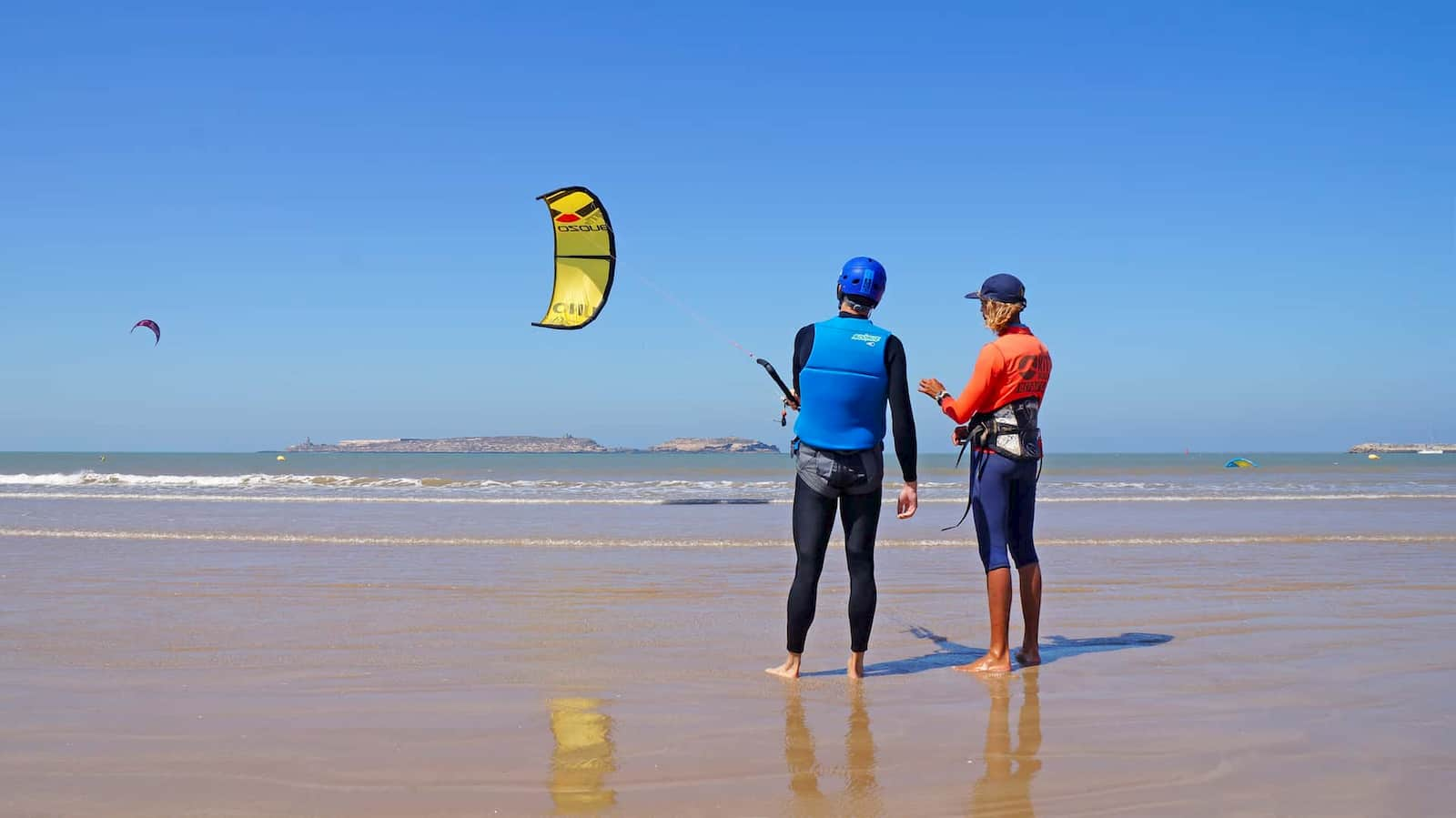
2. Body-dragging in the water
Once you’ve learned how to properly control the kite, it will be time to get wet! You will go in the water to put your skills to the test and experience the full potential of the wind. With your instructor, you should learn how to use the kite power to body-drag in the water, how to relaunch your kite, self-rescue, recover your board, and more. It’s a really fun step: you’ll be able to “play” with the kite and while being dragged behind your kite (without the board at first). By the end of this progression step, you should be attempting your first water-starts with the board in your feet!

3. Waterstart
You now feel confortable with your kite, and you can control it with one hand, while you can grab the board with your second hand. Doing the body-drag exercice, you have understand the different power zone of the wind window and how to create traction. You are ready to get on the board ! First step : sit into the water and put on the board in your feet. When are in the position, you will have to find the right motion to create the traction which will allow your body to get out of the water. The exercice is known as water-start. It’s the most technical step to go through by learning kiteboarding and it could required several attempts and training. Indeed, you have to coordinate your body, your board and your kite. Finally, when you get out of the water, you will be to seek to maintain the the traction, to begin riding. Firstly 10m, then 20m, and finally 200m… and you whill fo your first ride on your board. Waterstart achieved!
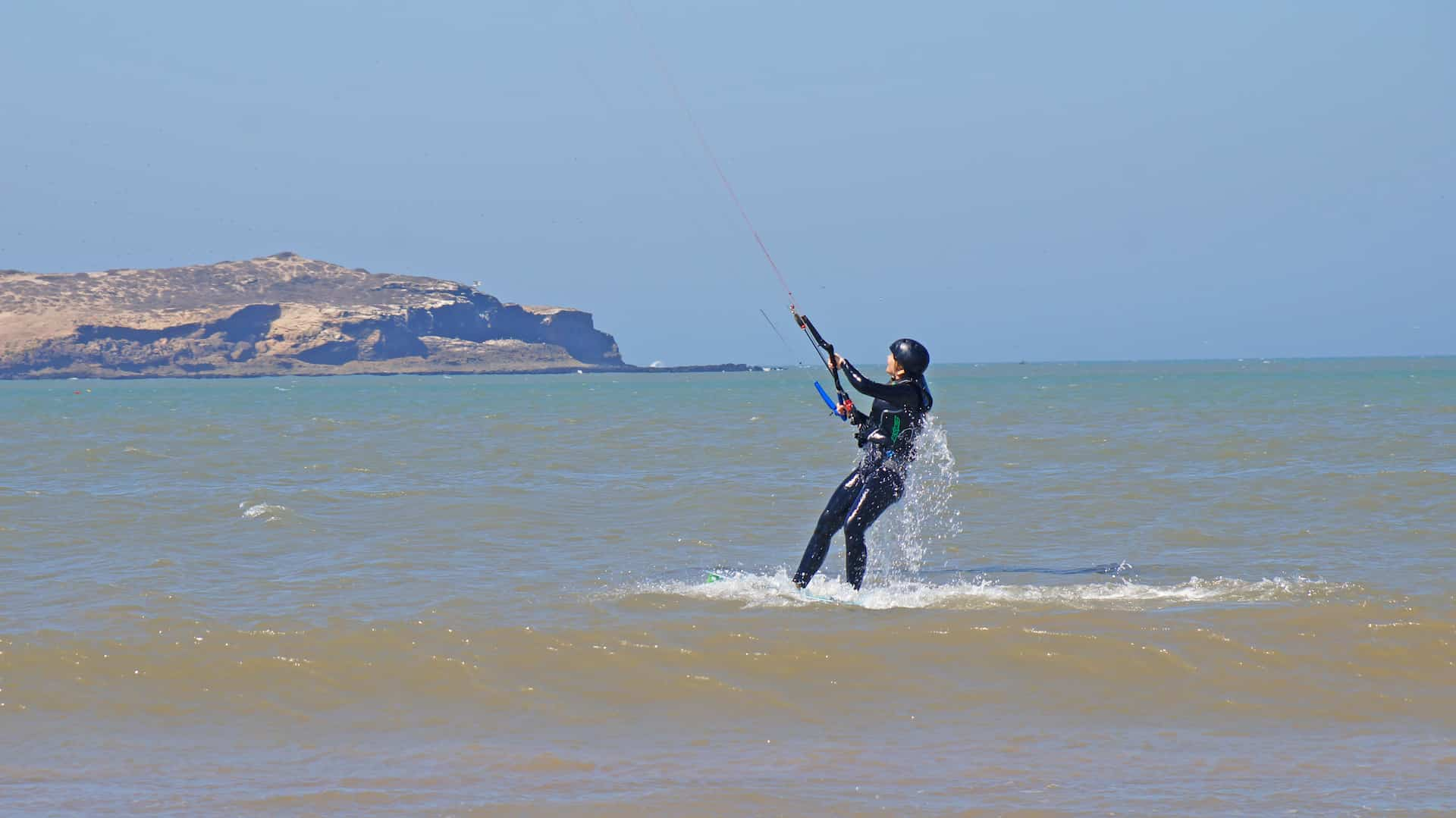
4. Get on riding
When you start getting on the board more constantly, you will learn how to keep on riding for a longer time and distance. This step is at least where you want your lessons to take you (providing you have enough time). At this level, your instructor should show you how to control your speed, ride upwind, switch to toe-side, and help you focus on important safety skills like self-launching and doing a self-rescue in deep water. As an independent rider, you should be able to ride on your own and should start thinking about buying your own gear (if you haven’t done it already).
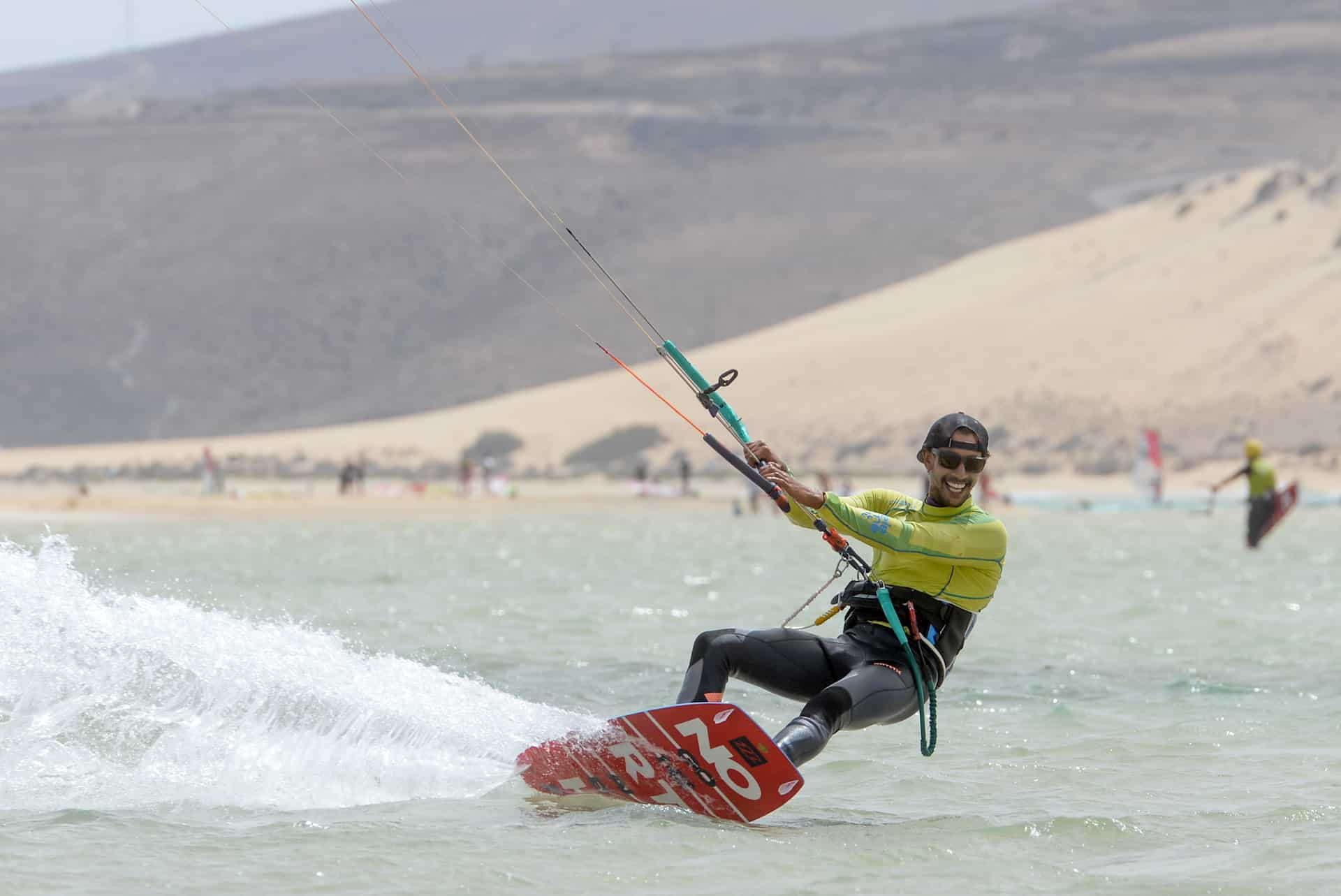
5. Progressing to next level
A lot of people won’t feel the need to progress further into kitesurfing, as being an independent kiter allows you to have a lot of fun on the water and enjoy the core sensations of kitesurfing. However, for those looking for more advanced and stylish skills, this is where you can truly reach new possibilities. Your instructor should show you various techniques like how to jump, combine grabs, or jibe on your board, for example.
But more importantly, progressing at this stage means becoming a more well-rounded kiter and learning practical skills such as how to rescue other kiters (and their boards) and learning about theoretical topics such as understanding weather and tides, getting into the aerodynamics of kiting, etc.
Kitesurfing truly is a sport with infinite possibilities. After becoming an advanced rider you can start focusing on expanding your riding style into new disciplines such as freeride, freestyle, wave riding or hydrofoiling. We won’t go into the details of the progression path of each discipline, but let’s just say that it’s a lot of fun and that if you have an appetite for learning and progression, you will be served!
